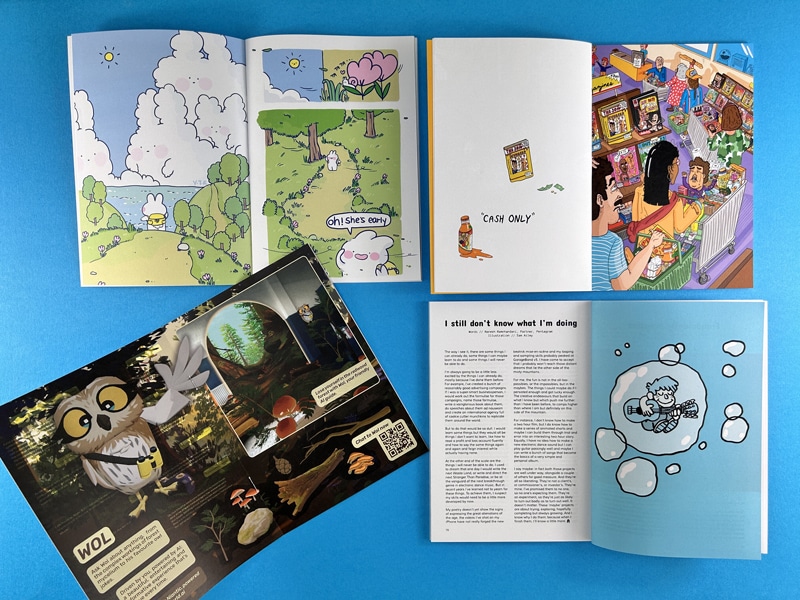Coming up with an idea for a poetry zine can be an exciting journey. Here are some steps to help you get started:
Poetry is a deeply personal form of expression, and the best ideas often come from your own experiences, emotions, and observations. Reflect on what moves you, whether it’s love, nature, social issues, or personal growth.
A theme can provide a unifying thread for your poetry zine. It could be as broad as “love and loss” or as specific as “the changing seasons in my hometown.” A theme can help guide your writing and give your zine a cohesive feel.
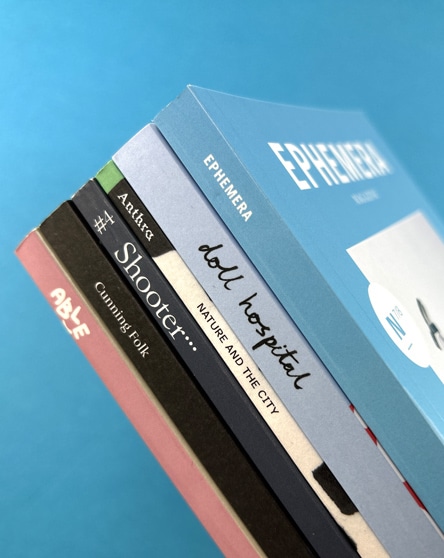
Think about who you’re writing for. Are you aiming to connect with other poets, or do you want to reach a broader audience? Understanding your audience can help shape your content and style.
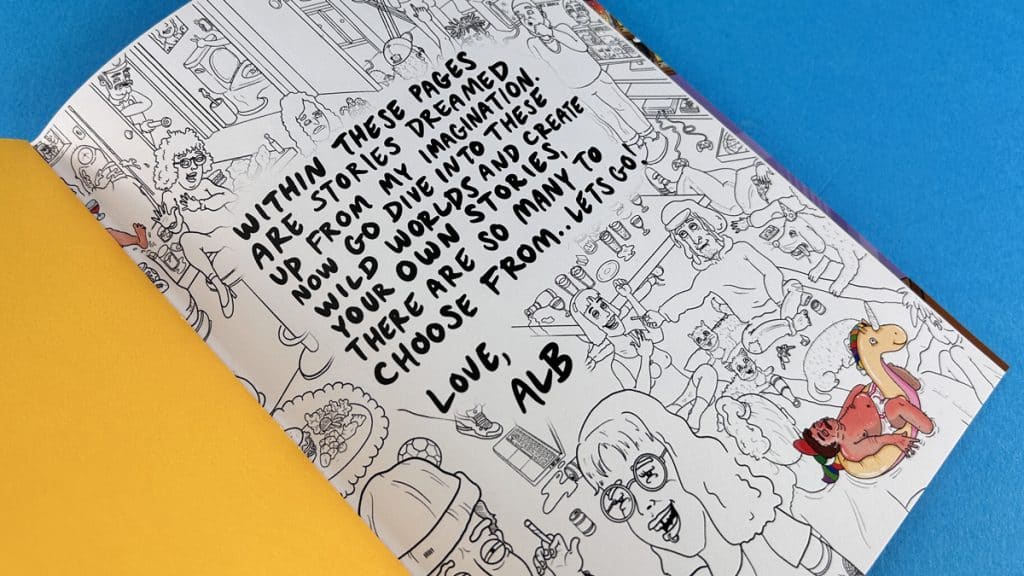
Poetry comes in many forms, from traditional sonnets and haikus to free verse and experimental styles. Don’t be afraid to play around with different forms to see what resonates with you.
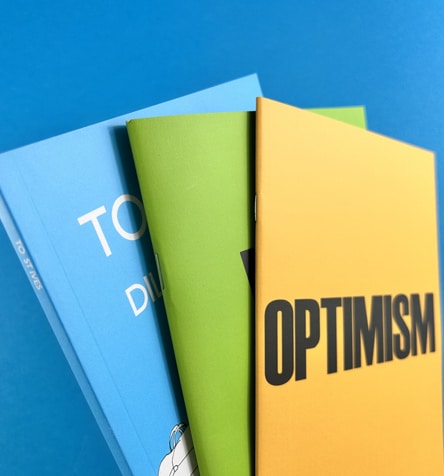
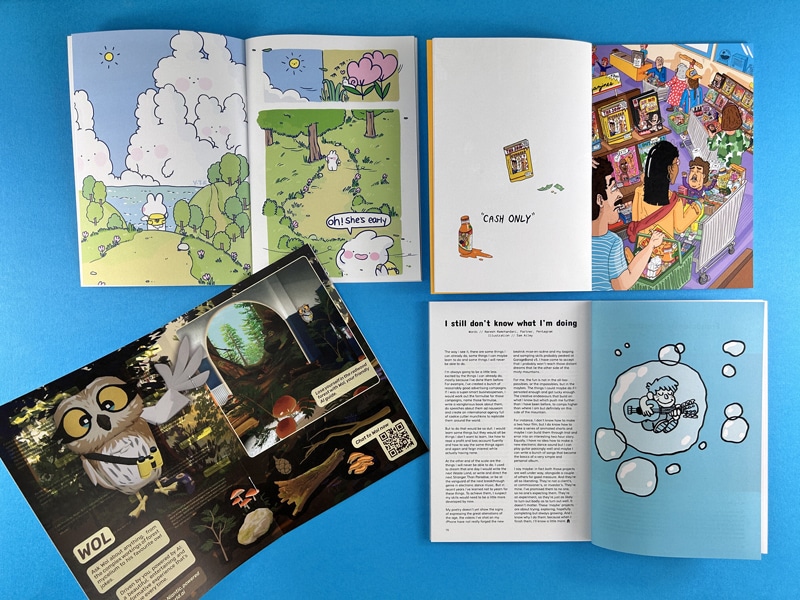
A mood board can be a great way to visualize your ideas and inspirations. You can include images, colours, words, and anything else that captures the vibe you want for your zine.
Remember, there’s no right or wrong way to create a poetry zine. It’s all about expressing your unique voice and perspective. So let your creativity flow and enjoy the process!
Popshot, a renowned platform for poets and illustrators, began their print journey with Ex Why Zed. Recognised for being zine printing experts, we at Ex Why Zed were thrilled to assist Popshot in bringing their creative vision to life. From the initial stages of design to the final print, we worked closely with Popshot to ensure their zine was a true reflection of their unique brand. Today, Popshot continues to inspire and engage audiences with their beautifully crafted zines, and we’re proud to have played a part in their journey.
For more tips and guidance on creating your own zine, check out our Definitive Zine Printing Guide.
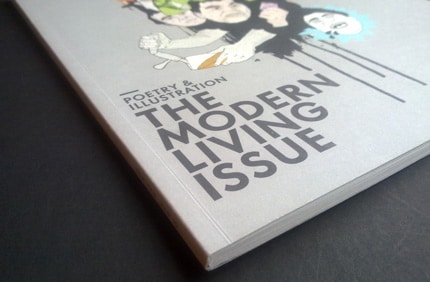
Hey there, creative superstar! Are you ready to dive into the world of indie poetry zines? These little gems are a hotbed of creativity, showcasing the talents of poets and artists alike. They’re a testament to the power of self-publishing, proving that you don’t need a big publishing house to make your voice heard. So, let’s take a closer look at these indie poetry zines that are making waves in the literary world.
First up, we’ve got The Chapess, a zine that’s all about showcasing the work of women writers. It’s a brilliant platform for female voices, offering a space for them to share their unique perspectives. The Chapess is a testament to the power of indie publishing, proving that you don’t need a big budget to create something truly impactful.
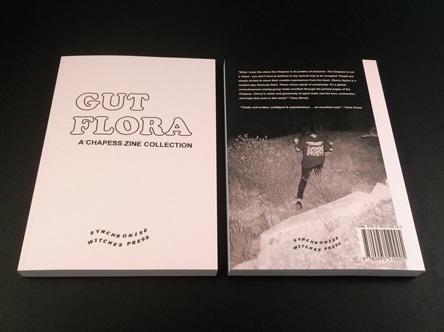
Next, we have OOMK, a zine that’s all about celebrating creativity and spirituality. It’s a beautiful blend of art, culture, and faith, offering a fresh perspective on what it means to be a creative individual in today’s world. OOMK is a perfect example of how zines can be a platform for exploring complex themes and ideas.
The Happy Reader is a zine that’s all about celebrating the joy of reading. Each issue features a deep dive into a classic book, along with interviews with notable figures in the literary world. It’s a must-read for any book lover, offering a fresh and engaging take on the world of literature.
Synchronise Witches is a zine that’s all about showcasing the work of female and non-binary writers. It’s a space for these voices to be heard, offering a platform for them to share their unique perspectives and experiences. Synchronise Witches is a testament to the power of indie publishing, proving that you don’t need a big budget to create something truly impactful.
Last but certainly not least, we have The Poetry Review, a zine that’s all about celebrating the best in contemporary poetry. Each issue features a selection of poems from both established and emerging poets, offering a snapshot of the current poetry landscape. The Poetry Review is a must-read for any poetry book lover, offering a fresh and engaging take on the world of poetry.
So there you have it, folks! These indie creative writing books are a testament to the power of self-publishing, proving that you don’t need a big budget to create something truly impactful. So why not give them a read, or better yet, start your own zine? With Ex Why Zed by your side, you’ll have all the support you need to bring your creative vision to life. Happy reading, and happy creating!
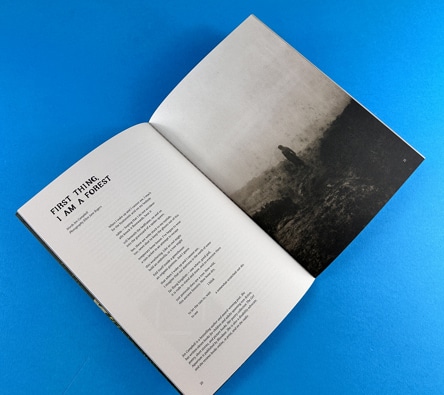
Zines have always been a platform for self-expression, a space where creators can let their imagination run wild. Whether it’s a literary magazine like Shooter, a typographic marvel like No Cold Callers, or a poetry zine, each one is a unique piece of art. In this post, we’ll take a closer look at these three distinct types of zines, each showcasing a different facet of creativity and individuality.
Shooter literary magazine is a testament to the diversity of topics that can be explored in zines. Each issue is centred around a different theme, providing a platform for a multitude of voices to be heard. For instance, the ‘Cities’ issue features neatly arranged text following a grid format, showcasing the poetry and creative writing of various writers. The text is intertwined with full-colour pages, acting as a backdrop to the creative writing.
The Shooter zines are perfect bound, with a neat spine that comfortably accommodates the title and the name of the magazine. This binding style not only gives the zine a professional look but also ensures durability.
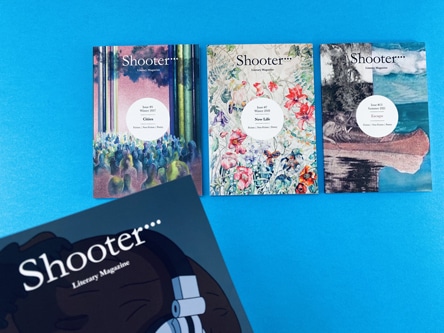
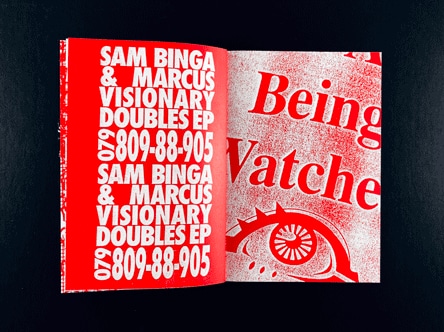
No Cold Callers is a zine that truly embodies the phrase “no rules for zines”. It’s a typographic feast, with layers upon layers of type stacked over each other. The inside pages are printed on 190gsm paper, showcasing what can be achieved with type.
The zine’s design is reminiscent of the iconic work of David Carson and Ray Gun, with its engaging one-colour print and consistent colours per page. The mix of images, photography, and a 70s style typeface creates a visually captivating experience. This compact, A6 wire stitch zine is a testament to the limitless possibilities of zine design.
Poetry zines offer a canvas for expressive words, a space where poets can share their thoughts and emotions. One such zine is an A5 perfect bound zine with 40 inside pages printed onto 90gsm uncoated paper. The cover is a 300gsm silk card with matt lamination on the outside, providing a professional appearance and added durability.
This zine, along with others like it, showcases the unique ways of creating a typographic zine. Each page is designed to attract the reader and grab their attention, with careful consideration given to the size of the font to ensure legibility.
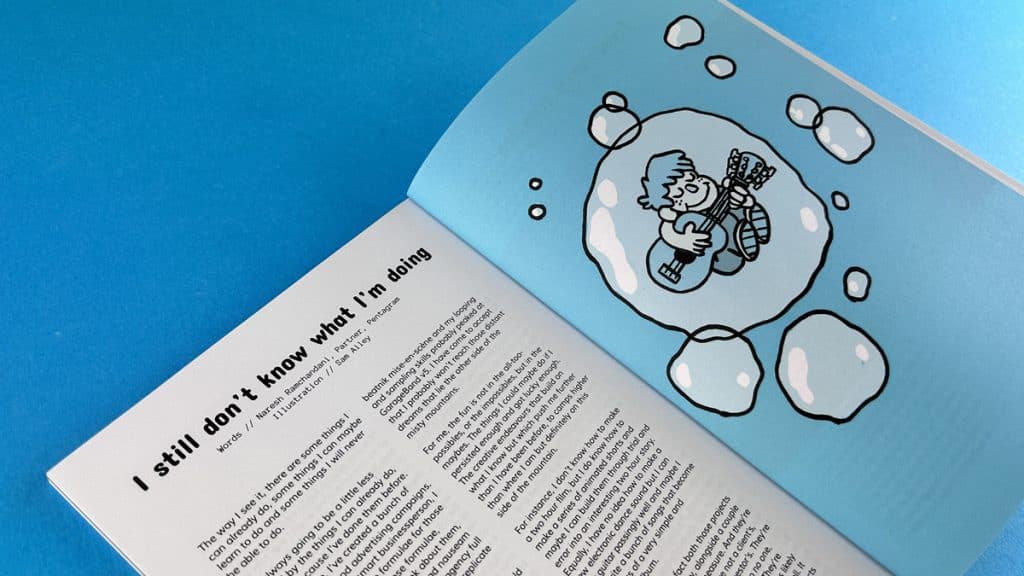
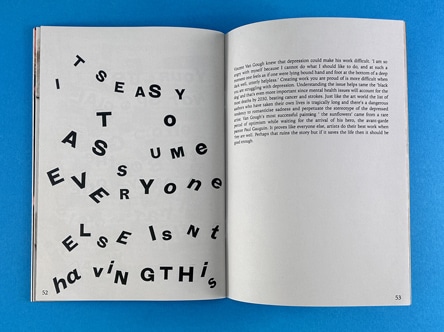
When it comes to styling your typographic zine, there are a few key considerations to keep in mind. The type on each page should be designed to attract the reader and grab their attention. The size of the font plays a crucial role in making your content legible. Check out our Definitive Zine Printing Guide for styling and aesthetic ideas.
For instance, you might want to consider using a larger font size for headers to make them stand out. For body text, a smaller font size would be more appropriate. Splash text, which is used to highlight important information or quotes, can be set in a larger font size and a different typeface to draw attention.
For more information on zine creation and printing, check out these resources:
Creative writing is a broad field that encompasses various forms, each with its unique characteristics and purposes. The four primary forms of creative writing are:
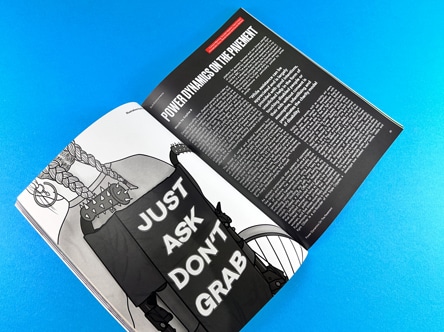
Creative writing is a vast field with numerous types and sub-genres. Here are nine types of creative writing that you might explore:
The five basic forms of creative writing are:
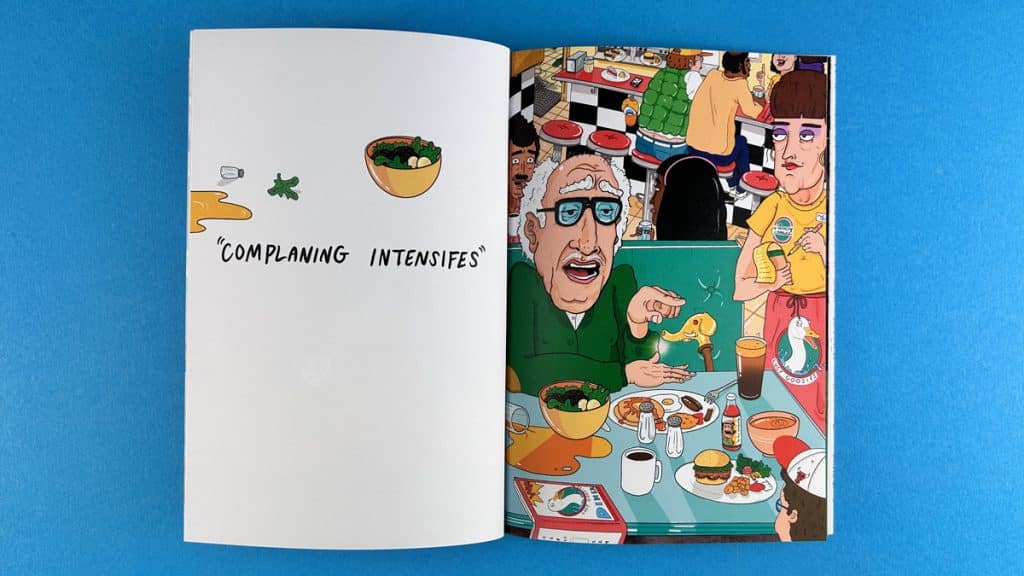
The three key elements of creative writing are:
The seven key elements of creative writing are:
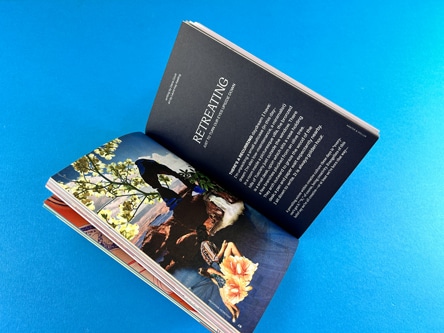
The six traits of creative writing are:
While creative writing is an art form that encourages freedom of expression, there are some general guidelines that can help you improve your craft:

The seven styles of writing are:
